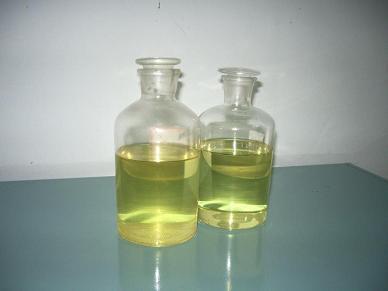Linalool is a chemical derived from flower and spice plants as a naturally occurring terpene alcohol. It is used in a variety of applications and the Environmental Protection Agency has approved its use as a pesticide, flavor agent, and scent. It can be used on people/pets and outdoors safely, without being a threat to wildlife.
Linanool has a pleasant scent that is closely related to a spicy floral tone. It is used in consumer goods such as cosmetics, lotions, creams, shampoos, perfumes, etc. It is commonly listed under ingredients for these products as beta linalool, linalyl alcohol, linaloyl oxide, p-linalool, allo-ocimenol, and 2,6-dimethyl-2,7-octadien-6-ol and can be mixed into product components that are not listed as well.
Where does Linalool Come from?
There are several natural Linalool sources. It is found in over 200 plants. The Lamiaceae plant and herb family, which includes mints and other scented herbs, is a common source. The Lauraceae plant family, which includes laurels, cinnamon, and rosewood, is also a readily available source. The Rutacea (rue) family, which contains citrus plants, is also a Linalool source that can be harvested and extracted. Birch trees and several different plant species that are found in tropical and boreal climate zones also produce linalool. Although technically not plants, some fungi produce linalool as well.
Chemical Enantiomer Properties of Linalool
Linalool is present in two major sterogenic forms that occur naturally. This means that the chemicals are mirrored copies in terms of their composition. Although mirrored, they have different properties based on the Linalool molecule’s structure. The two forms are known as Lecareol and Coriandrol.
Licareol – This is a form of Linalool that is found in plant sources such as lavender, laurel, and sweet basil. Linalool of this type is generally very useful as a scent agent in different products.
Coriandrol – This form of Linalool is commonly found in plants. It is commonly found in Coriander seeds, which are used to produce essential oils. Palmarosa and sweet orange flowers are also common sources.
Humans respond to both enantiomers’ different scents. The Coriandrol has a sweet floral scent while the Licareol has a woody lavender scent. Both are noticeable, even when added to products.
Natural Synthesis of Linalool in Plants
Linalool is most often produced in plants’ floral tissue. An enzyme known as Linalool Synthase is responsible for producing Linalool in these plants. Linalool Synthase is a Monoterpene Synthase that is bound in the plant’s membrane. The process consumes isopentenyl pyrophosphate through the universal isoprenoif intermediate geranyl pyrophosphate process of the Linalool Synthase.
Linalool Uses
Linalool is used in various ways. Hygienic products often have Linalool in them as a scent agent. Linalool is commonly used as a perfume in a variety of soaps, detergents, shampoos, lotions, sanitary pads, etc. that have a minty or sweet floral scent in them.
Linalool’s insecticide properties are very useful for controlling fleas and cockroaches. Since Linalool is generally non-toxic to humans and animals, it is a very useful alternative to toxic insecticides. Insecticides that primarily consist of Linalool can be placed anywhere on a property without the fear of hurting animals.
Linalool is an ingredient in some mosquito repellents. Linalool’s efficiency as a mosquito repellent has not been tested on all mosquito strains. Mosquito repellents that list Linalool as the active ingredient are questionable due to the absence of data on the efficacy of Linalool as a mosquito repellent.
Vitamin E is a common byproduct of Linalool production. Vitamin E is a fat soluble vitamin that the body uses in different ways. It can be used to reduce the visual effects of aging by moisturizing the cells and reducing the effect of free radicals. It can also help scars and other forms of dermal layer damage heal. Vitamin E provides several health benefits when taken in moderation. Taking a dose of well over 400 IU (International Units) or 268 mg (0.26 grams) can increase the risk of death in adults.
Aromatherapy or (therapy via aromatic compounds) has become popular in recent decades. Linalool, when used as an aroma-therapeutic tool, is thought to lower stress levels. This has been shown in experiments where rats are placed in stressful conditions. After inhaling the Linalool scents, the rats’ stress levels and immune responses lowered to near normal in comparison to control rats. Although not fully tested outside lab tests on rats, it is claimed that using Linalool in aromatherapy can help to soothe stress and provide relief from a wide range of ailments, from allergies to headaches.
The Safety of Linalool Use
Linalool is generally safe. However, people with eczema have a 5-7% chance of having an adverse reaction if they come in contact with Linalool. The Linalool reacts with oxygen and exposure can cause an eczema flare up. The only way to stop the reaction is to minimize exposure to these products. While some individuals still enjoy using the products, it is important for them to prevent the linalool from oxidizing by buying smaller containers of products that contain linalool and replacing the lid after use.
The amount of linalool that is deadly for humans to ingest or place on the body has not been determined. It would probably be difficult for a sane individual to ingest or place on the body an amount that would prove fatal. Irrespective of this, linalool toxicity in humans who regularly use it has not yet been determined.




June McGouldrick
Can anyone suggest foods without linalool as I’m allergic